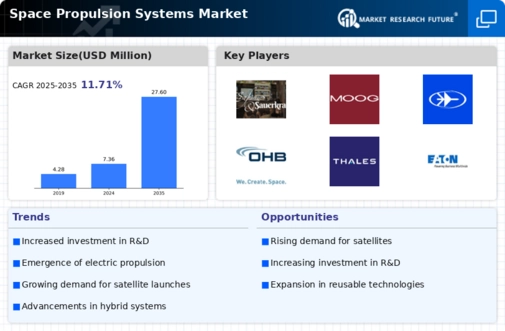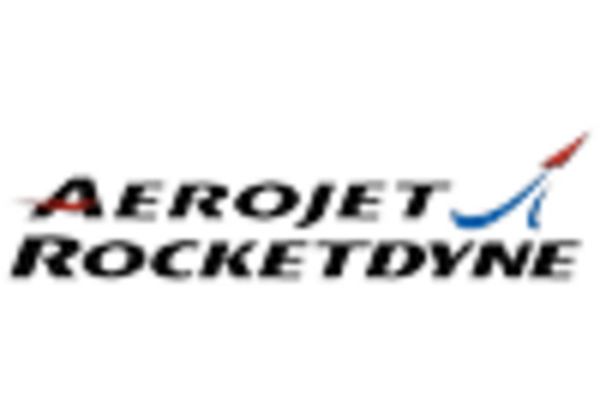Market Analysis
In-depth Analysis of Space Propulsion Systems Market Industry Landscape
The space propulsion systems market is experiencing dynamic growth, fueled by several key factors that shape its market dynamics. Propulsion systems are essential for enabling spacecraft to maneuver, change orbits, and travel vast distances in the vacuum of space. One of the primary drivers of this market is the increasing demand for satellite deployments and space exploration missions. With the growing number of satellites being launched for communication, Earth observation, navigation, and scientific research purposes, there's a corresponding rise in the demand for reliable and efficient propulsion systems to place these satellites into their designated orbits and maintain their positions. This demand for space propulsion systems is expected to continue growing as space agencies, private companies, and research institutions undertake more ambitious missions to explore the cosmos and expand humanity's presence in space.
Moreover, technological advancements in propulsion systems are driving market dynamics in the space propulsion sector. Innovations in propulsion technologies such as electric propulsion, ion propulsion, and solar sails have revolutionized space exploration by offering more efficient, lightweight, and cost-effective propulsion solutions compared to traditional chemical propulsion systems. Electric propulsion systems, in particular, use electric or electromagnetic fields to accelerate charged particles and generate thrust, enabling spacecraft to travel farther and faster while consuming less propellant. These advancements have expanded the application scope of space propulsion systems, enabling longer-duration missions, greater payload capacity, and more cost-effective space transportation solutions.
Furthermore, the emergence of new space markets and commercial space ventures is fueling demand for space propulsion systems. The space industry is experiencing a renaissance driven by private companies such as SpaceX, Blue Origin, and Rocket Lab, which are developing innovative launch vehicles, satellite constellations, lunar landers, and space tourism initiatives. These commercial space ventures require reliable and efficient propulsion systems to power their spacecraft and enable a wide range of missions, from delivering payloads to orbit to exploring the Moon and beyond. As the commercial space sector continues to grow and diversify, the demand for space propulsion systems is expected to increase, creating opportunities for propulsion system manufacturers and suppliers to capitalize on this burgeoning market.
Moreover, the increasing interest in deep space exploration missions and human spaceflight endeavors is driving market dynamics in the space propulsion sector. Space agencies such as NASA, ESA, Roscosmos, and others are planning ambitious missions to explore destinations beyond Earth's orbit, including the Moon, Mars, and asteroids. These missions require advanced propulsion systems capable of providing the necessary thrust, efficiency, and reliability to transport astronauts and scientific payloads across vast distances in space. Propulsion technologies such as nuclear propulsion, solar electric propulsion, and advanced chemical propulsion are being developed to enable these deep space exploration missions and support long-duration human spaceflight missions, presenting opportunities for propulsion system manufacturers to contribute to the future of space exploration.
However, market dynamics in the space propulsion sector also face challenges such as cost constraints, technical complexity, and regulatory hurdles. Developing and manufacturing space-qualified propulsion systems require significant investment in research and development, testing, and qualification processes, which can be prohibitively expensive for some missions, especially for small satellite developers and emerging space companies. Additionally, ensuring the safety and reliability of propulsion systems is paramount, given the critical role they play in space missions. Addressing technical challenges such as performance optimization, thermal management, and propulsion system integration is essential for maintaining mission success and ensuring the integrity of space missions. Moreover, navigating complex regulatory frameworks and obtaining approvals for launching and operating spacecraft equipped with propulsion systems in space can be time-consuming and costly, posing barriers to market entry for propulsion system manufacturers and space industry stakeholders.

















Leave a Comment